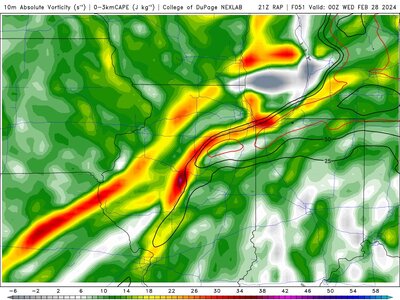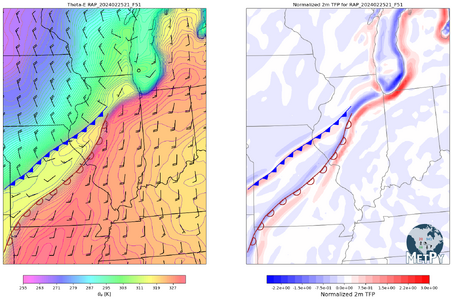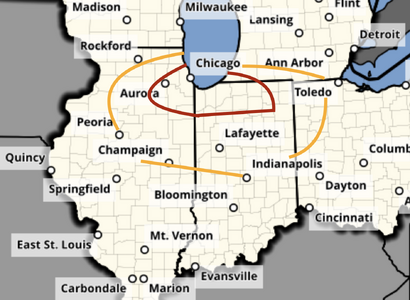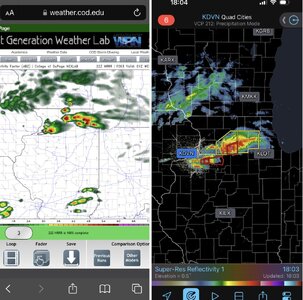Dan Robinson
EF5
Models have been in agreement for some time now on a potent shortwave trough translating across the US early next week. With ample moisture return shown taking place following a cold front on Saturday, the synoptics favor some form of an organized severe weather outbreak on Tuesday and possibly into Wednesday.
What models agree on now is a broad zone of dewpoints in excess of 60F shown reaching at least the I-70/I-64 corridors in the Midwest with 30kt+ southerly surface flow, as a 50 knot southwest flow at 500mb increases to 70kt into the early afternoon. Beyond that, there many details yet to be resolved.
Potential negatives include the lift arriving early and too strongly with widespread clouds and/or precipitation in the morning. There are some indications of this event extending continuously into Wednesday the 28th as the main trough ejection occurs over the Midwest.
What models agree on now is a broad zone of dewpoints in excess of 60F shown reaching at least the I-70/I-64 corridors in the Midwest with 30kt+ southerly surface flow, as a 50 knot southwest flow at 500mb increases to 70kt into the early afternoon. Beyond that, there many details yet to be resolved.
Potential negatives include the lift arriving early and too strongly with widespread clouds and/or precipitation in the morning. There are some indications of this event extending continuously into Wednesday the 28th as the main trough ejection occurs over the Midwest.




